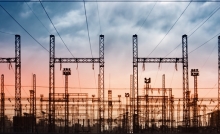
Here Are Some Interesting Facts About Electrical Transformer
1 June 2015
An electrical transformer is defined as a static device that transforms electrical energy from a circuit to another without direct electrical connection, assisted by mutual induction between the two windings. It can transform power from one particular circuit to another without altering its frequency, though the voltage level may differ after the transformation.
History of Transformer
The idea of a transformer was introduced back in 1880. Then in the year 1950, about 70 years later, there was an introduction of 400KV electrical power transformer in high-voltage electrical power system. Then in early 1970s, a large unit rating of 1100MVA was produced, before 800+ KV class transformers started to be manufactured 10 years later in 1980.
How a Transformer Works
The functioning of a transformer is entirely based on one of electricity’s simplest facts which states that, when fluctuating electric current is flowing through a wire, a magnetic field is generated in the process and an invisible magnetism pattern is formed all around it. This magnetism’s strength is technically known as magnetic flux density, and is directly proportional to the electric current size or strength. Therefore, the larger the size of the electric current, the stronger the magnetic field.
Primary and Secondary Current
There is another interesting fact on the functioning of a transformer. Whenever there is a fluctuation of a magnetic field around the piece of wire, an electric current is generated in the wire. Meaning that, by putting another wire coil near the first one and sending a fluctuating electrical current into the initial coil, an electric current will be created in the second wire. Primary current is the current put in the first coil. The current formed in the second coil is known as the secondary current.
Transformer Uses Alternating Current
In the secondary current formation procedure, an electric current passes from one coil to another through an empty space, a process technically referred to as electromagnetic induction. To facilitate this process in the transformer for more efficiency, the coils are wrapped around a soft iron core. Since a fluctuating electric current is necessary for this process to occur effectively, an alternating current (AC) is used, not direct current (DC). This is because AC is a constantly reversing electricity.
Transformer’s Main Constructional Parts
-Primary Winding
This part produces the magnetic flux when connected to an electric source and is wound on one side of the core.
-Magnetic Core
After the magnetic flux has been produced by the primary coil, it is passed through this core. It is a low reluctance path linked to the secondary coiling, to create closed magnetic circuit.
-Secondary Winding
It is wound in the same core opposite to the primary winding, and is responsible for the final output of the transformer.
Transformer Categorization
Step Up and Step Down Transformers
These two types of a transformer are generally used to step up and down the level of voltage of power in the distribution and transmission power network.
Three Phase and Single Phase Transformers
Three phase transformer is used in a three phase power system because it is more cost effective as compared to the latter. Where size matters though, it is better to use a bank of three of the single phase transformers instead of one three phase transformer.
Outdoor and Indoor Transformers
Just like the names suggest, there are transformers which are designed to be installed outdoors, while others to be installed indoors.
Transformers are very important to us in many ways, even though it is an interesting fact that many people don’t understand how it functions. It is an important device that is worth studying and understanding how it woks.
News
10 February 2021
OTDS have completed manufacture of 4 shunt reactors and voltage...





.jpg)